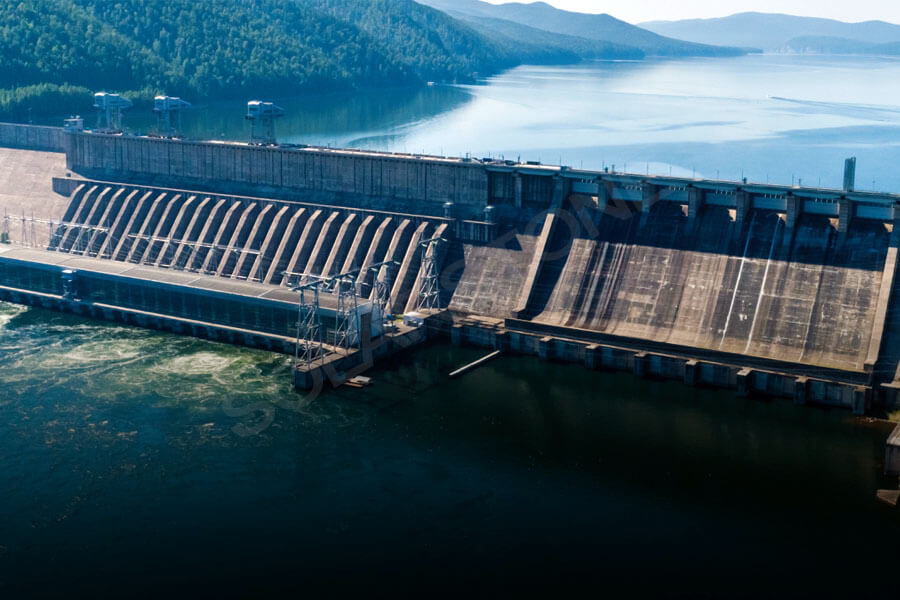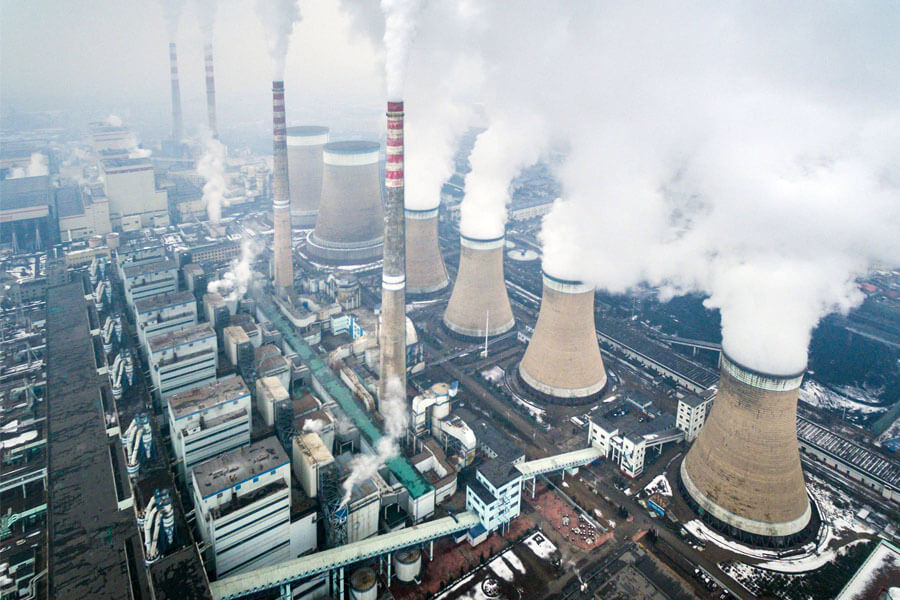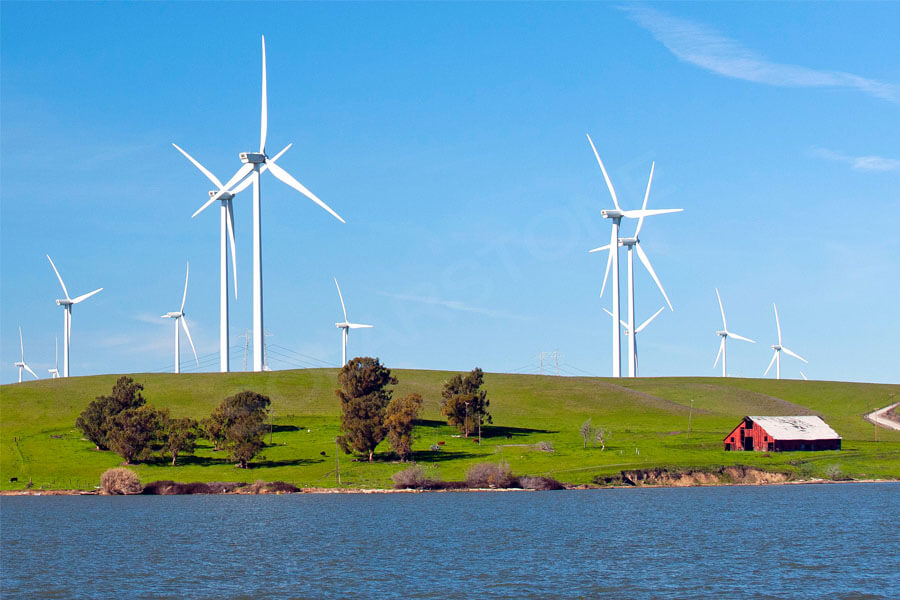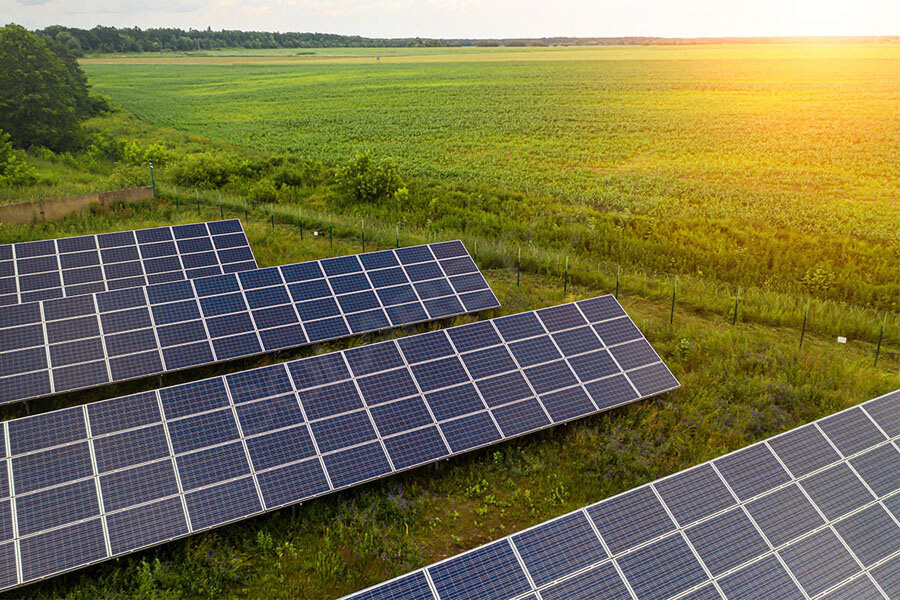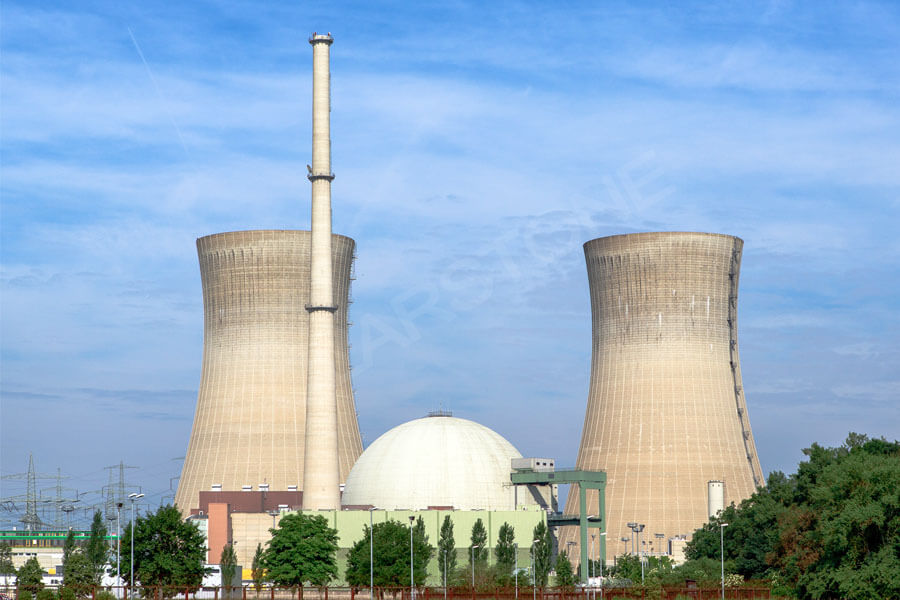Are you curious: Where does the electricity around us come from? How does electric energy come out? What are the advantages and disadvantages of each power generation method? Next, let’s introduce the mysteries of each power generation mode.
1. Hydropower
The process of hydropower generation is to make full use of the natural law of water flowing to the lower part to convert the potential energy of water into mechanical energy and electrical energy. In short, it is to build dams and hydropower stations in rivers with large water level drops, introduce water flow into hydropower stations, impact the rotation of water turbines or a waterwheel, drive the rotation of generator rotor, and electricity will be generated.
Due to the different water head differences of each power station, it is not good to measure the water demand of 1 kWh electricity in a fixed unit. Taking the Three Gorges of the Yangtze River as an example, about every 4.2 tons of Yangtze River water can generate 1 kWh of power at the Three Gorges hydropower station, and 4.2 tons of water can be used for washing three times in an ordinary bathtub with a depth of 60 cm.
Hydropower is a kind of renewable and clean energy, which is cheap and pollution-free. While generating power, hydropower stations can also control floods, improve shipping conditions and the ecological environment, and replenish water for the downstream in the dry season. However, hydropower stations rely on the weather. In case of less rain season or sudden flood exceeding the maximum storage capacity, they can only take less power generation or even stop power generation.
2. Thermal power generation
Power plants that use coal, oil, or natural gas as a fuel are collectively referred to as thermal power plants. Taking the coal-fired thermal power plant as an example, firstly, the coal is sent to the boiler through the conveying equipment (conveyor belt) to generate heat. The water in the boiler is heated to produce high-temperature and high-pressure steam. The steam reaches the steam turbine through the pipeline to promote the steam turbine to rotate with the generator, and the electricity is generated from the generator.
Thermal power generation relies on fuels such as oil, coal, and natural gas. Taking coal as an example, about 258 grams of coal resources are required for each kilowatt-hour of power generation, which is equivalent to about one cup of a disposable paper cup for daily use.
The thermal power station has mature technology, flexible site selection, and a convenient plant layout, which can effectively reduce the power transmission and distribution loss of the power grid. Low initial investment cost, small floor area, and short construction cycle. The unit is less affected by adverse factors such as environment and climate. The operation is stable and reliable. The heating thermal power station also uses the excess heat of thermal power generation and improves the energy utilization rate. However, the main problems of thermal power generation are high pollution, high energy consumption, high cost in the later stage, and dim prospects for sustainable development.
3. Wind power generation
In the mountains and fields, Gobi desert and blue sea, the “big windmill” of “spinning and dancing” is the wind turbine. Wind turbine uses the wind to drive the wind turbine impeller to rotate, convert the wind energy into mechanical energy, and then the generator converts the mechanical energy into electrical energy.
The electric energy output by the wind turbine is transmitted to the booster station of the wind farm through the power collection line and then transmitted to the power grid after boosting, which has become a clean wind power that can be used by thousands of households.
The energy source of wind power is wind. When the wind speed reaches 3m / s, the windmill can rotate to generate electricity. Each rotation of the blades of the 1.5 MW unit can generate about 1.4 kWh. A 100000 kW wind farm can generate about 260 million kWh a year, which can be used by 40000 ordinary families for one year.
The biggest advantage of wind power is clean, renewable, and zero-emission. A 100000 kW wind farm can save 93000 tons of standard coal, reduce 256000 tons of carbon dioxide, and 12000 tons of dust to the atmosphere. The biggest disadvantage of wind power is that it can only rely on the weather. When the wind speed is less than 3m / s or higher than 25m / s, the wind turbine can only be shut down and standby.
4. Photovoltaic power generation
Photovoltaic power generation is based on the principle of the photovoltaic effect and uses solar cells to directly convert solar energy into electric energy. It is mainly composed of solar panels, controllers, and inverters. The main components are composed of electronic components. Solar panels are encapsulated and protected after being connected in series to form large-area solar cell modules, Combined with a power controller and other components, a photovoltaic power generation device is formed.
Once the photovoltaic power station is completed, as long as there is light, it can generate power without material exchange with the outside world. However, the energy obtained by photovoltaic power generation is related to meteorological conditions such as four seasons, day and night, cloudy and sunny.
According to the calculation of conventional solar panels, 1 kW solar panels are about 10 square meters and can generate 1 kWh of electricity in 1 hour. In the case of a conventional family of three with complete appliances, the average power consumption is 6 kwh a day. Therefore, in theory, if a 1 kW solar panel is placed in a space of 10 square meters and illuminated for 6 hours a day, it can be self-sufficient.
The photovoltaic power generation process is simple, there are no mechanical rotating parts, no fuel consumption, no emission of any substances including greenhouse gases, no noise and no pollution, and the solar energy resources are widely distributed, inexhaustible and inexhaustible.
5. Nuclear power generation
The power generation mode of the nuclear power stations is very similar to that of the thermal power stations. The main difference is that the boiler is different. The “boiler” of the nuclear power station is a nuclear reactor, or “nuclear boiler”.
In short, nuclear fuel fission occurs in the equipment of the “reactor” to produce a large amount of heat energy, and then the heat energy is brought out by water under high pressure to generate steam in the steam generator. The steam drives the steam turbine to rotate with the generator, and electricity is generated continuously.
To generate electricity, nuclear power plants need special raw materials – nuclear fuel. At present, commercial nuclear power plants mainly use uranium as nuclear fuel. After uranium combustion, there is almost zero-emission. 1kg of uranium-235 is equivalent to the size of an egg and can generate about 22.8 million kWh of power.
Nuclear energy is a safe, economic, and efficient clean energy. It is not only an important energy choice for mankind to deal with climate change, but also an important option to achieve the goal of carbon peak and carbon neutralization. One million kilowatts of a nuclear power plant in one year is equivalent to reducing coal consumption by about 3 million tons, reducing emissions of 6 million tons of carbon dioxide, 26000 tons of sulfur dioxide, 14000 tons of nitrogen oxides, and 3500 tons of soot.
This is equivalent to 17000 hectares of new trees planted every year. However, nuclear power plants are not suitable for peak and off-peak load operation, and the investment cost of nuclear power plants is large and the site selection requirements are high.


